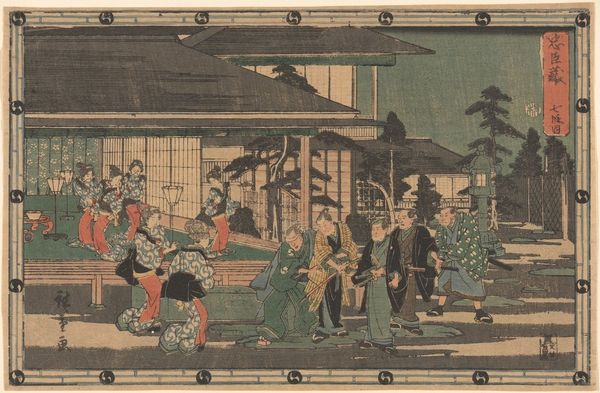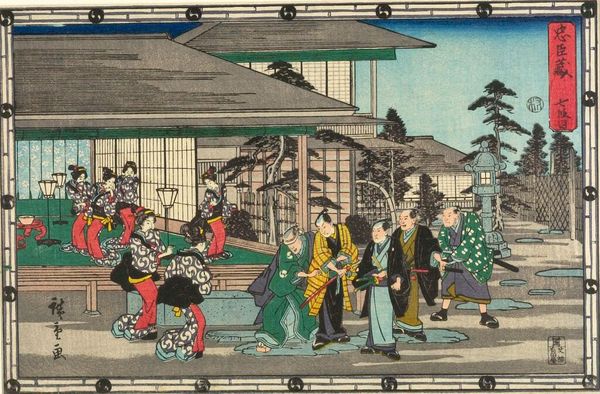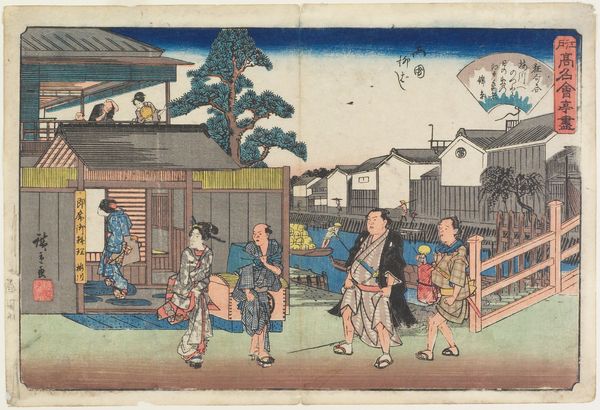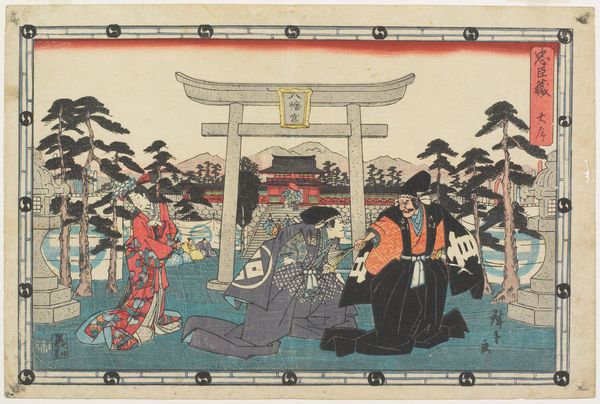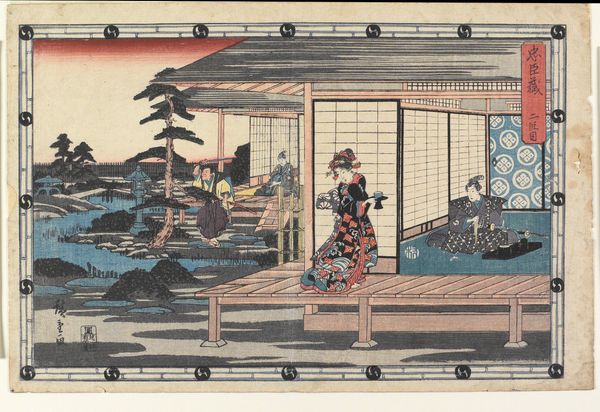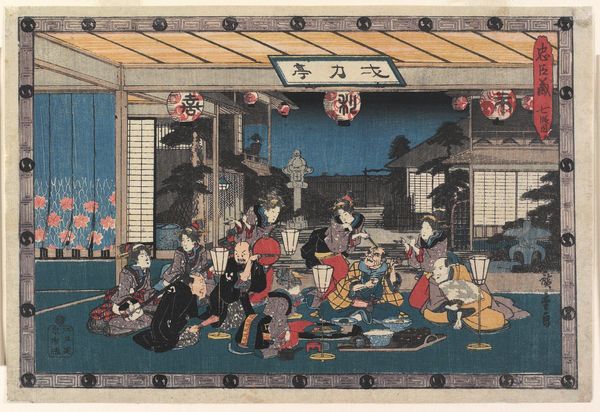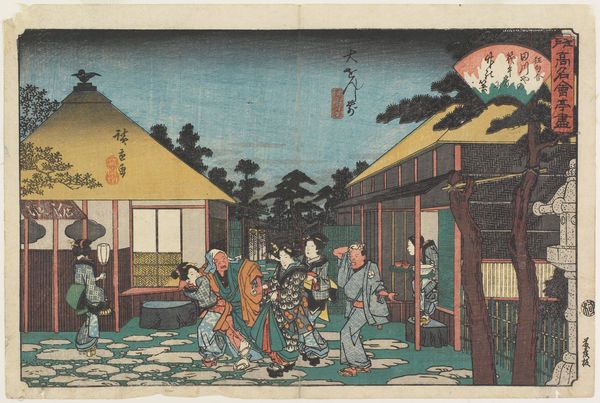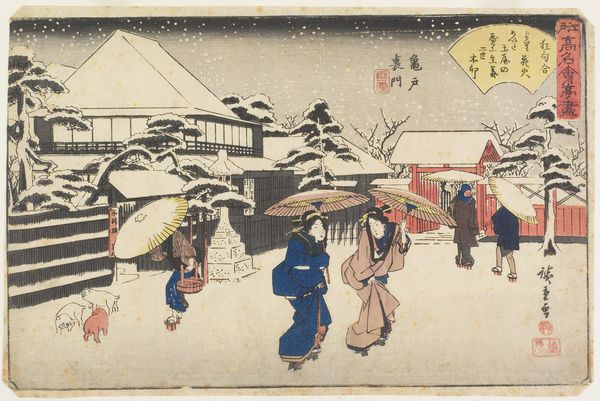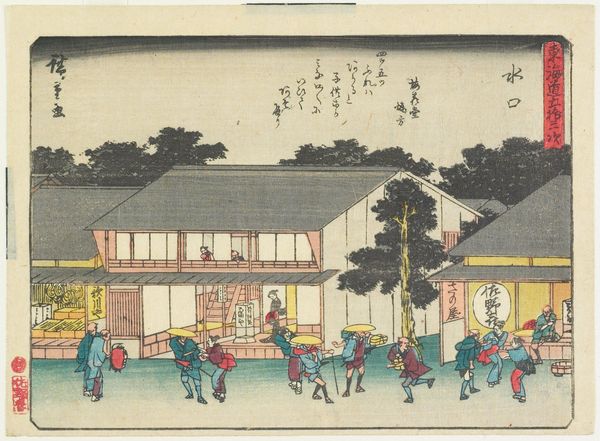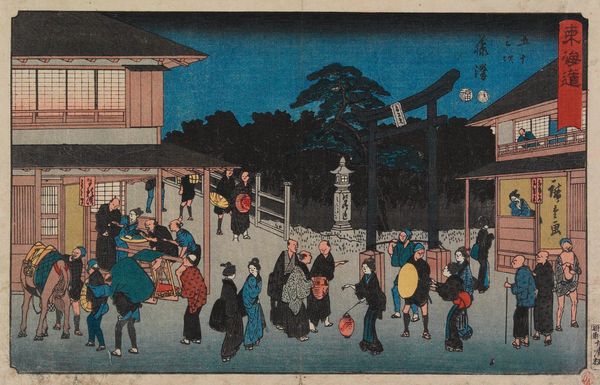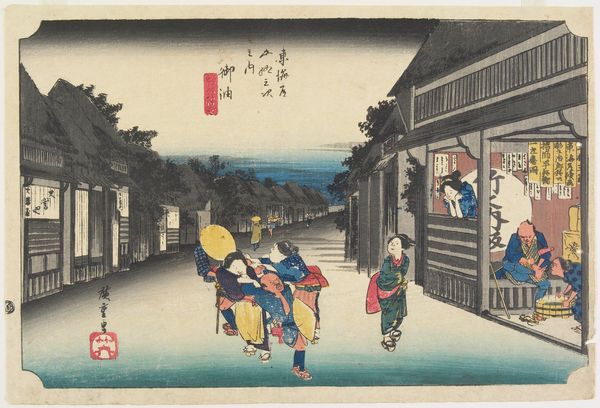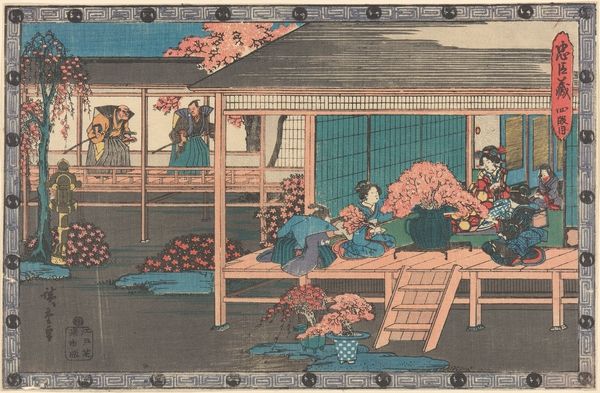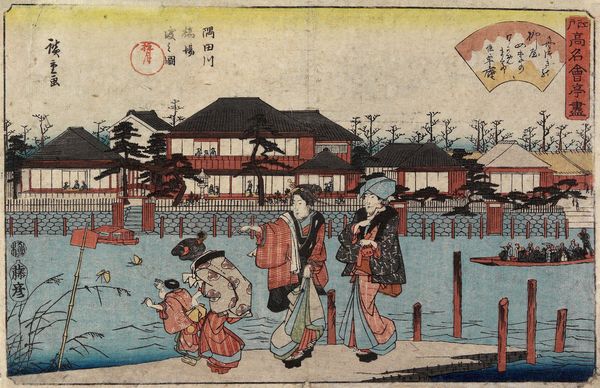
print, ink
# print
#
asian-art
#
landscape
#
ukiyo-e
#
ink
#
genre-painting
Dimensions: 8 7/8 × 13 5/8 in. (22.5 × 34.6 cm) (image, horizontal ōban)
Copyright: Public Domain
Curator: This is Utagawa Hiroshige's "Act VII," created around 1843-1847. It’s a woodblock print using ink and color, now residing here at the Minneapolis Institute of Art. My eye is immediately drawn to the way he represents a bustling scene, almost theatrical. Editor: It’s certainly… populated! There’s an evening mood, or maybe early morning—something about the muted blues makes it feel both intimate and public. And there’s so much going on materially here, not just within the depicted scene, but with the print itself: the distinct layering, the carving... it's quite visceral! Curator: Exactly! Hiroshige’s genius lies in capturing the everyday life of Edo period Japan and turning it into something so meticulously crafted, right? Consider the labor involved, the planning, the careful carving of each block. Each figure has a role; there’s an economy of form in this piece, each stroke necessary. Editor: Oh, without a doubt! I'm also really stuck on the border around the artwork here, there are the little ball shapes within its composition. I see them sort of scattered across the whole image like dewdrops! And consider what it meant to produce multiple prints— to serve and perhaps reflect the consumer culture of Edo society at the time. It isn’t just *high art*, it’s part of everyday life. Curator: It's also the tension between the intimate portrayal of the actors inside and the more impersonal outdoor figures. It is a commentary about performance, gender roles and hierarchy. How are we supposed to interpret this subtle tension between class and labour? Editor: I also see that as creating a space for empathy, like recognizing humanity on all social levels. By representing figures, the artist offers them dignity, in contrast with any exploitation linked to craftwork itself, and perhaps his own participation as a skilled maker in that world. It’s so complex and fascinating to get lost within those levels. Curator: The beauty of this work lies in that very complexity and its open invitation for many, sometimes conflicting interpretations. Each encounter might reveal something entirely different, which makes Hiroshige an absolutely fascinating and unique figure. Editor: Indeed! It pulls you into its world. The art history here is only a portal to more profound understanding!
Comments
minneapolisinstituteofart about 2 years ago
⋮
Act 7 takes place in a teahouse in the Gion pleasure quarter in Kyoto. Ōboshi Yuranosuke, the chief retainer of the wronged Lord Enya, frequents the area and drinks and carouses with prostitutes in order to allay suspicion that he might exact revenge. He has to deceive not only his obvious enemies but also his fellow retainers, some of whom have turned against him. The print shows such a clever piece of acting by Yuranosuke. Dressed in the blue kimono and blindfolded, he is pretending to fool around with the teahouse waitresses in the garden at night. As he stumbles drunkenly, the man behind him, who is actually a spy, unsheathes his sword. The action reveals his rusty blade, interpreted as a sign of Yuranosuke's dissipation.
Join the conversation
Join millions of artists and users on Artera today and experience the ultimate creative platform.
